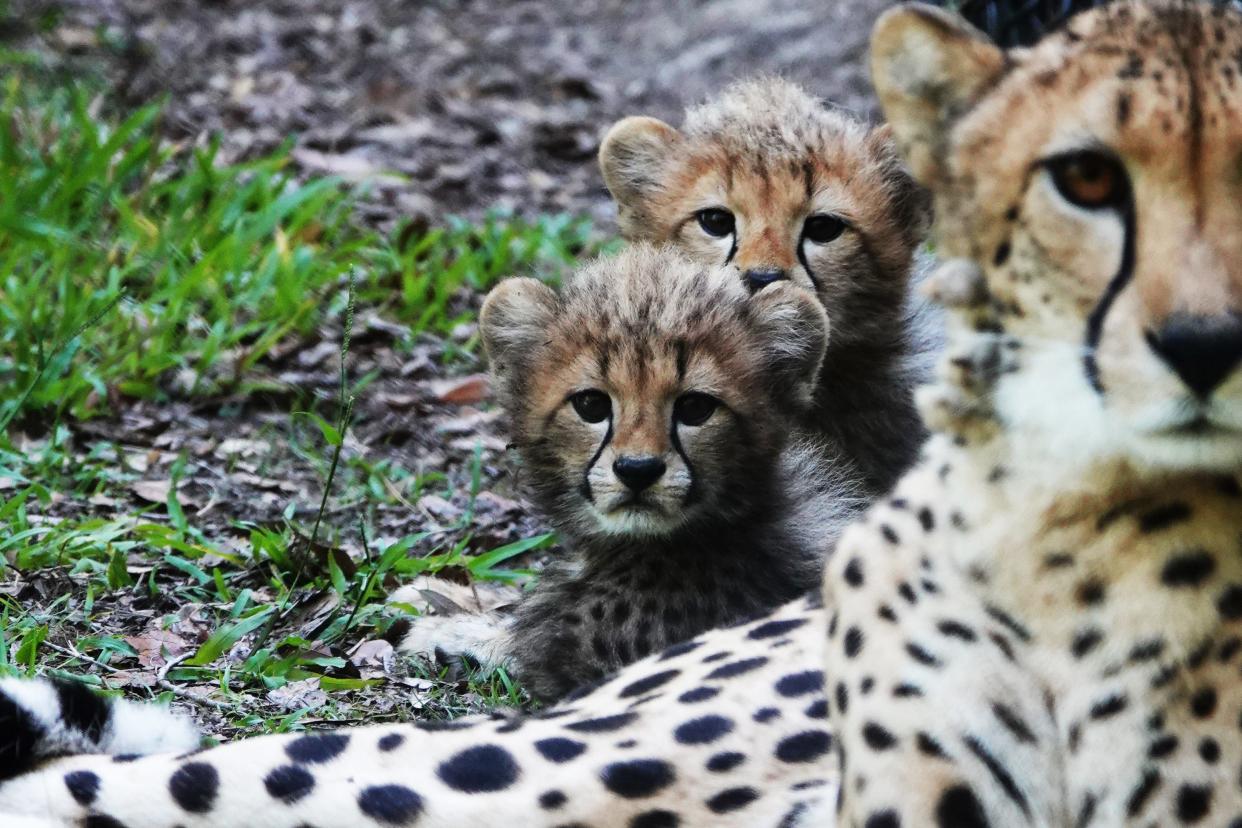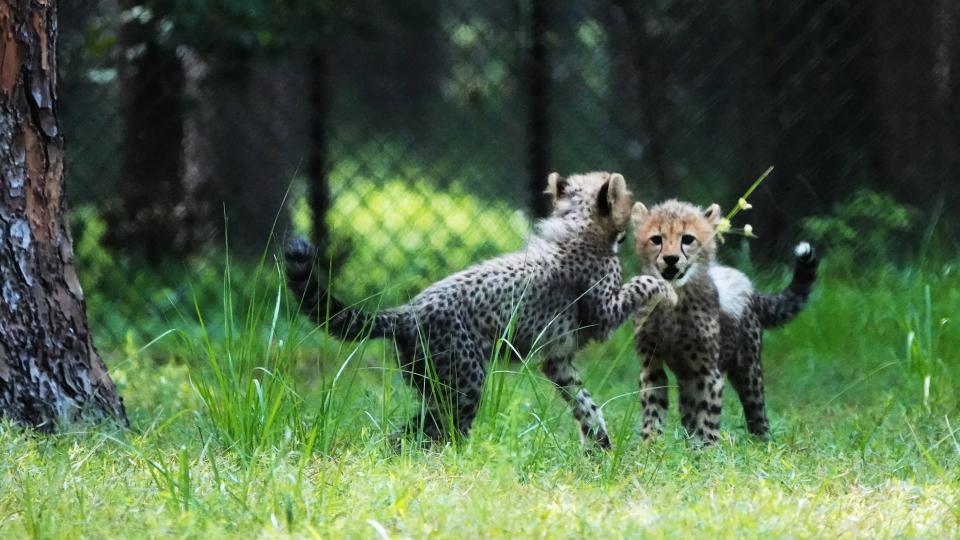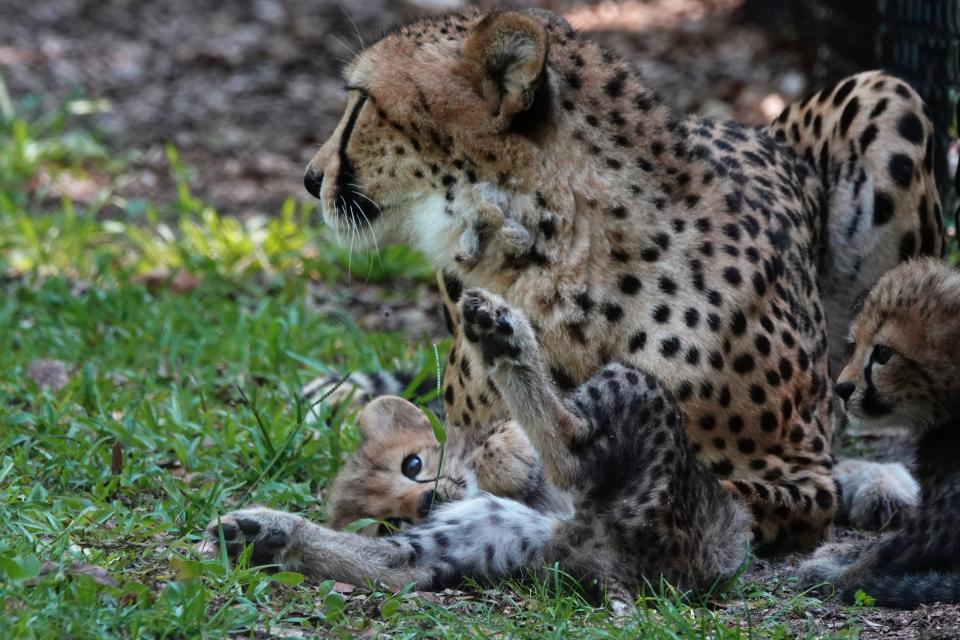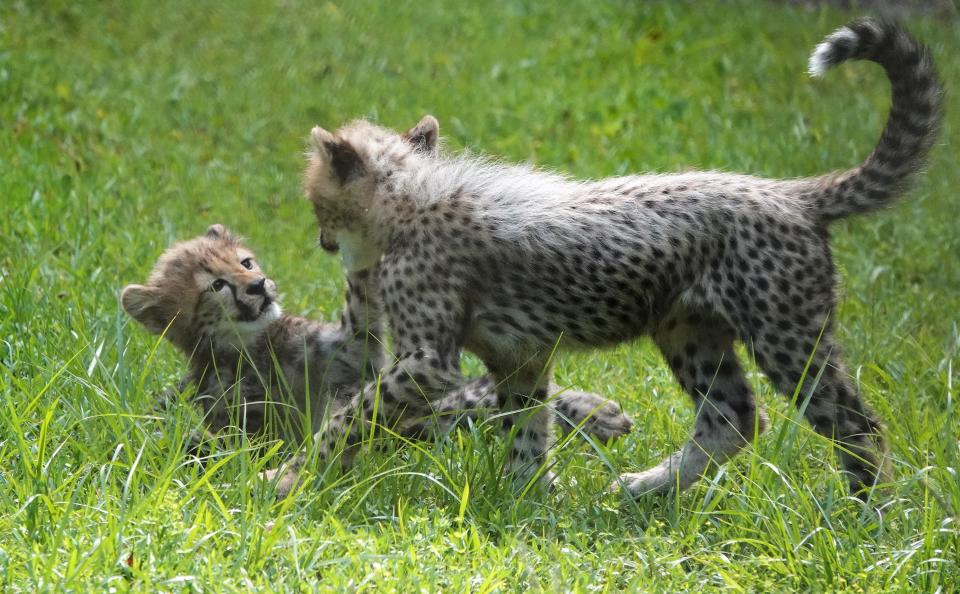Cheetah cubs Azula and Zuko born at White Oak Conservation wildlife refuge

Go ahead, say it: "Aww." Azula and her brother, Zuko, are cute, really cute. The cheetah cub siblings also represent hopes for the future of their species.
The cubs are growing up fast under the watchful eyes of their first-time mom, Ruffles, at White Oak Conservation — an internationally respected nonprofit wildlife refuge in Yulee about 30 miles north of Jacksonville.
Born April 5, the cubs are more than just cute. They signify the future of their species, Steve Shurter, White Oak executive director, said in an email to the Times-Union.
"Everyone loves babies, but we want to ensure these births draw attention to the issue of habitat loss," Shurter said. "Research has found that the world's fastest land animal has lost 91 percent of its historic habitat range. We encourage people to get involved in land conservation however they can."
Only about 7,100 cheetahs remain in the wild. The big cats have vanished from roughly 90 percent of their historic range in Africa. Cheetahs are virtually extinct in Asia where a small isolated population of about 50 remains, United Nations World Wildlife Day data show.
Retired circus elephants: First group of former circus elephants settle in at White Oak Conservation
Aww!: Cute and critically endangered baby lemur born at Jacksonville Zoo and Gardens
More: Critically endangered Malayan tiger, new arrival at the Jacksonville Zoo, may help species survive
African cheetahs like Azula and Zuko are listed as "vulnerable," while Asian cheetahs are designated as "critically endangered" by the International Union for the Conservation of Nature (IUCN) Red List of Threatened Species.
The big cats face threats including habitat loss, conflict with humans — typically farmers killing them to protect livestock — and the Black Market pet trade.

Azula and Zuko represent the fourth generation of cheetahs born at the secluded 17,000-acre wildlife refuge along the St. Marys River.
Their mom, Ruffles, as well as her mother, Karamel, also were born at White Oak. Karamel also remains at White Oak, according to Animal Care Specialist Sophia Tribuzio.
White Oak partners with wildlife agencies and conservation organizations throughout the United States and around the world to protect rare, endangered and threatened species as well as preserve essential wildlife habitats.
Its efforts include improving the quality of life of individual animals, recovering rare species, restoring ecosystems and protecting wilderness areas.
Cheetahs are among about 30 wildlife species as well as retired circus elephants at the refuge.

Since 1985, more than 190 cubs have been born at White Oak where cheetah conservation is a priority animal program, Tribuzo said.
Ruffles is a first-time mom. The cubs seldom stray far from her side. But their personalities are emerging: Azula is "very brave" while her brother is "more timid."
It will be a while before the cubs strike out on their own.
"We try to mimic their natural history so these cubs will likely stay with Ruffles until they are about two years old. The cubs could stay together until they are about three years old," Tribuzo said.

Whether the cubs remain at White Oak as adults is unknown at this point. Their future will be guided by the Cheetah Species Survival Plan (SSP), which is a program of the Association of Zoos and Aquariums.
The SSP goal is to build "a sustainable and healthy population" of rare, endangered, threatened or vulnerable wildlife species.
"The cheetah SSP meets annually to discuss moves and breeding plans for the cheetah community. The cubs will likely be at White Oak for a couple of years," Tribuzo said of Azula and Zuko's immediate future.
In addition to cheetahs, White Oak works to preserve the future of wildlife species such as Mississippi Sandhill Cranes, Southern white rhinos, the Florida panther, Black rhinos, Grevy’s zebra, okapi, bongos and the Florida grasshopper sparrow.
This article originally appeared on Florida Times-Union: Cheetah cubs born at White Oak Conservation in Yulee, Florida

